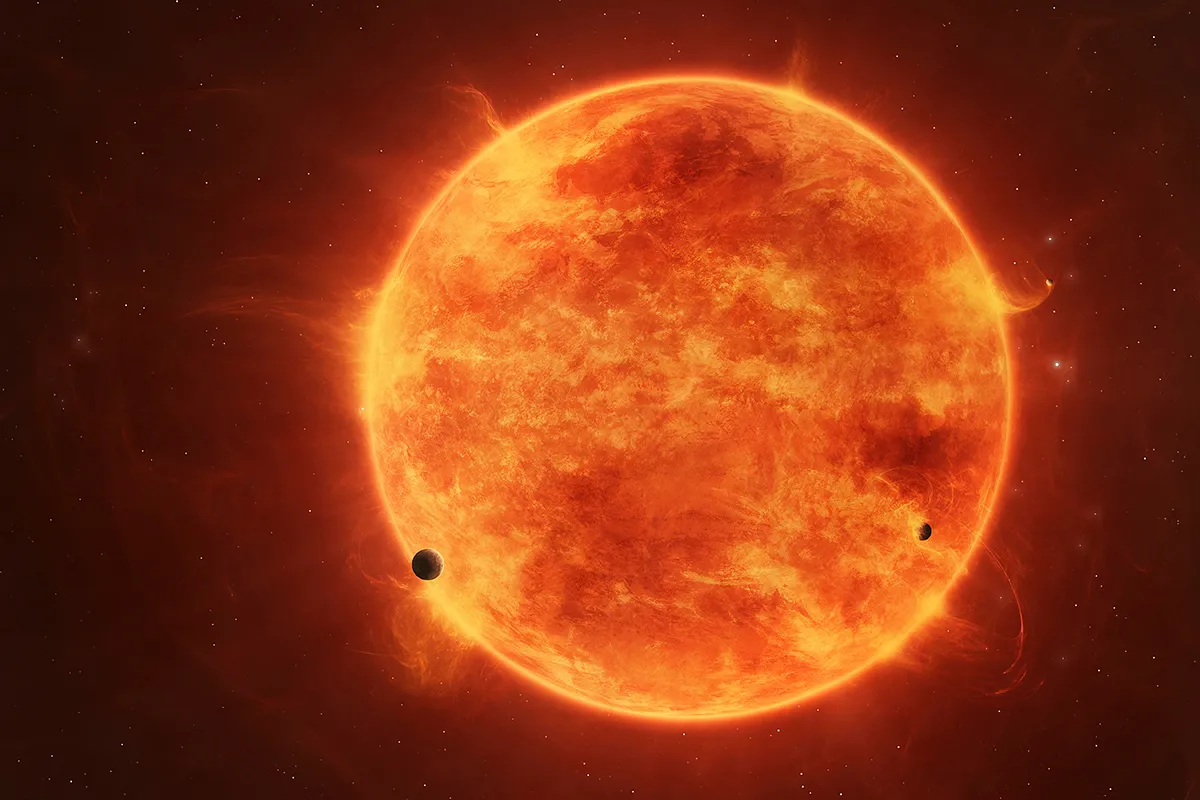A star has been caught in the act of swallowing one of its planets for the first time, giving a preview of our own Solar System’s fate.
The star, ZTF SLRN-2020, first attracted attention in May 2020 when the Zwicky Transient Facility in California – which scans the sky nightly – detected it had brightened by over 100 times in just 10 days.
Initially, astronomers thought the brightening was caused by two stars merging.
However, the star remained bright in the infrared for 100 days after the initial outburst, indicating it was surrounded by a cloud of cold material.
"When a star brightens it usually becomes much hotter," says Kishalay De, who first noticed the star’s odd outburst while a PhD student at Caltech and who now works at MIT.
"So, low temperatures and brightening stars do not go together."

The energy from the outburst was also 1,000 times less than any previous stellar merger.
This ruled out a second star, but instead pointed towards a gas giant planet like Jupiter, which just so happens to be around 1/1000th the mass of the Sun.
The dusty belch from the star was caused by the planet pulling gas from the stellar surface as it spiralled in, ever closer.
This gas would have then cooled to form the dust seen in the follow-up observations.
A similar fate awaits our own planet, though not for around five billion years.
This is when the Sun will begin to run out of fuel and swell to become a red giant, expanding to engulf Mercury, Venus and Earth.
"For decades, we’ve been able to see the before and after – before, when the planets are still orbiting very close to their star, and after, when a planet has already been engulfed, and the star is giant," says De.
"What we were missing was catching the star in the act, where you have a planet undergoing this fate in real time. That’s what makes this discovery really exciting."
When stars consume planets...
Words: Chris Lintott
Considering scenarios for what might happen in the dramatic encounters between stars and planets has long been a favourite hobby for an ecletic band of theorists.
One of my favourites is the notion that if a giant planet is engulfed then its moons would be stripped away by tides, ending up as new planets in orbit around the star.
Such moons would act as giant comets, producing a debris disc around the star.
Such a series of events has been used to explain the dramatic dimming of Boyajian’s star in 2018.
It may be that the star ate a planet a century ago, leaving us to observe the effects of its lost moons.
So stars beware: thoughtlessly consuming planets can have consequences.
Get the full story at www.caltech.edu/about/news/star-eats-planet-brightens-dramatically


